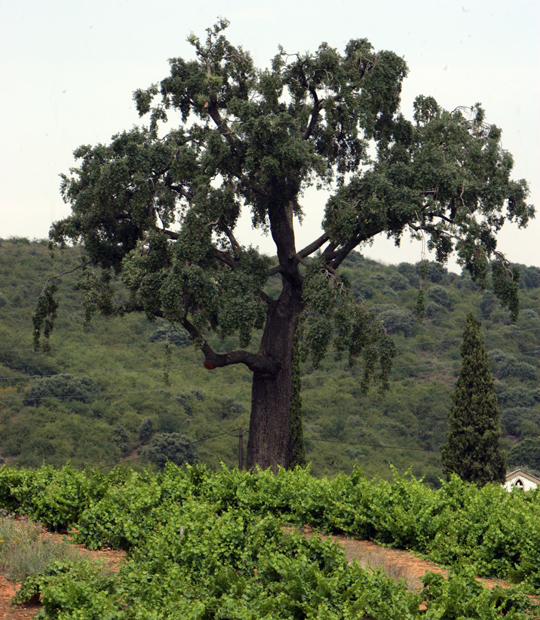
THE WINE & THE BEAR
The Wine’s connection to the bear
For the grape’s importance and its inherent richness, Bodegas Martín Códax has committed itself to creating a quality Mencía wine.
After months of thorough investigation by the winery’s Technical Department staff, El Bierzo was chosen as the finest region for cultivation thanks to its ideal soil, climate, and splendid local vineyards.
High in Bierzo’s mountains, mature Mencía vines with the clear potential to produce wines of the greatest quality were found. To their surprise however, they were not the only ones to make this discovery.
At their feet they found bear footprints that would inspire the name of the wine and the team’s ongoing commitment to this endangered species. For this reason, Cuatro Pasos and the bears will always step in the same direction: that of protection.
Challengesof the Brown Bear
The fact that the Cantabrian Brown Bear is near extinction is no secret. Though it may seem otherwise, the survival of this vulnerable mammal depends largely on humans. In the Cantabrian Mountains, specialists are working hard to prevent the species becoming extinct. In areas such as El Bierzo, where there was once a large population, bears are few in numbers and just three females have been identified.
One of the main causes for their disappearance is the departure of humans living in high mountain areas. Given the lack of fruit trees and other animals in the area, the bears have trouble finding food. At the end of their hibernation, the young struggle with malnourishment and often do not make it, thus complicating the propagation of the species.
Cuatro Pasos has committed itself to the problem and is working to find solutions.
Measures Taken in Protecting the Brown Bear
Due to the increasing concerns for the survival of the bear, Cuatro Pasos has partnered with FAPAS, the Fund for the Protection of Wild Animals. FAPAS is an organization committed to the protection of Iberian wildlife in the Cantabrian Mountains and has several projects aimed at the preservation of the Cantabrian Brown Bear species.
There are several actions on which Cuatro Pasos is working in order to safeguard and restore the bear habitat in El Bierzo region.
The corridors connect large areas of mountain ranges hence favouring the patches for this plantigrade animal. Thanks to their identification, individuals may be registered and their territories identified.
Walks, photo monitoring, genetic identification… All this with the aim of getting the number of bears in the area.
Fruit trees provide food for the bear and help the environment by capturing CO2 from the atmosphere. Planting fruit trees has the added benefit of natural dispersion, thus ensuring their permanence. Abandoned lands where corn, wheat or potatoes were once grown have been chosen as the sites for planting fruit trees. The primary plant species are chestnut and cherry trees, as they provide nourishment for the bears in the fall and spring, two key periods as the bears require great amounts of fats and vitamins during these months.
Cortines are ancient circular stone buildings of Roman origin that were installed in the mountains at the time to protect beehives. Bears could not enter these corridors and thus were prevented from destroying the beehives. Unfortunately, the practice was gradually abandoned over time. Cuatro Pasos has resumed the practice with the hope of increasing bee populations. Bee colony numbers have fallen due to diseases such as foulbrood and Barroasis that arose when American bee species were introduced to the indigenous population. The recovery of the bee population is essential to the survival of the bear as bees assist in the pollination and natural spreading of the plants on which the bear feeds.
Another of the latest actions is placing various experimental beehives that differ from the traditional ones because the bear can extract the honey without damaging it and the bees, thus favouring the pollination by the bees.


